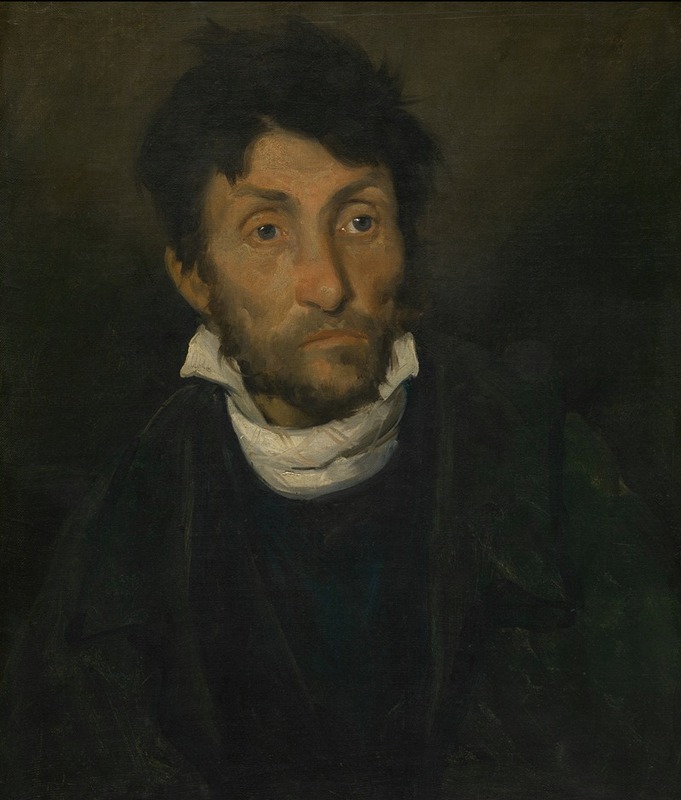
Portrait of a Kleptomaniac
A hand-painted replica of Théodore Géricault’s masterpiece Portrait of a Kleptomaniac, meticulously crafted by professional artists to capture the true essence of the original. Each piece is created with museum-quality canvas and rare mineral pigments, carefully painted by experienced artists with delicate brushstrokes and rich, layered colors to perfectly recreate the texture of the original artwork. Unlike machine-printed reproductions, this hand-painted version brings the painting to life, infused with the artist’s emotions and skill in every stroke. Whether for personal collection or home decoration, it instantly elevates the artistic atmosphere of any space.
"Portrait of a Kleptomaniac" is a painting by the French artist Théodore Géricault, created around 1822. This work is part of a series of ten portraits known as the "Monomaniacs" or "Portraits of the Insane," which Géricault painted during the latter part of his career. These portraits are significant for their psychological depth and their departure from the traditional approaches to portraiture of the time.
Géricault, best known for his monumental work "The Raft of the Medusa," was a leading figure in the Romantic movement. His interest in human psychology and the darker aspects of the human condition is evident in these portraits. The "Monomaniacs" series was inspired by Géricault's fascination with mental illness and his collaboration with Dr. Étienne-Jean Georget, a pioneering psychiatrist of the era. Dr. Georget commissioned Géricault to create these portraits to aid in the study of mental disorders.
"Portrait of a Kleptomaniac" depicts a man with a somber and introspective expression. The subject's gaze is directed slightly away from the viewer, suggesting a sense of detachment or introspection. The painting is characterized by its realistic portrayal and the subtle use of light and shadow to convey the subject's psychological state. Géricault's approach was innovative for its time, as he focused on capturing the individuality and humanity of the mentally ill, rather than depicting them as mere caricatures or stereotypes.
The painting is executed with a muted color palette, which enhances the somber mood of the piece. Géricault's brushwork is meticulous, capturing the textures of the man's skin and clothing with great detail. The background is kept simple and unobtrusive, ensuring that the viewer's attention remains focused on the subject's face and expression.
"Portrait of a Kleptomaniac" and the other works in the "Monomaniacs" series are considered important contributions to the field of psychological portraiture. They reflect the Romantic era's interest in exploring the complexities of the human mind and emotions. Géricault's empathetic portrayal of his subjects challenged contemporary perceptions of mental illness and highlighted the need for a more compassionate understanding of those affected by it.
Today, "Portrait of a Kleptomaniac" is housed in the Museum of Fine Arts in Ghent, Belgium. It continues to be studied and admired for its artistic and historical significance. The painting serves as a testament to Géricault's skill as a portraitist and his commitment to exploring the human condition in all its facets. Through works like this, Géricault not only advanced the art of portraiture but also contributed to the broader discourse on mental health and the treatment of individuals with mental disorders.


















